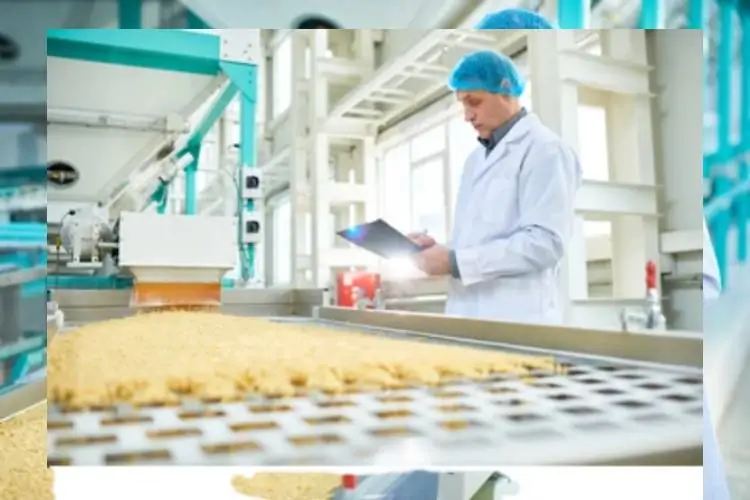23 Sep

Food safety refers to steps taken during food preparation, handling, and storage procedures designed to avoid disease and harm in food. Food items may pose a variety of health risks while traveling through the supply chain, from farm to plant to table. In order to limit these risks and avoid damage to customers, safe food handling techniques and procedures are adopted at every step of the food production cycle.
There are several rather rival standards for food safety – FDA, USDA, GMPs, GFSI, HACCP, SQF, BRC, FSSC, IFS, to mention just a few acronyms which may well be known. Each has its unique criteria and is intended to assess different elements of your operations and to enhance food safety. Audits offer you the chance to discover methods to improve your procedures in this kind of setting.
What is a Food Safety Audit?
A food safety audit focuses on collecting information on a food company to identify areas where possible improvements in the food safety procedures and systems of the company are possible. It also highlights areas of business that have shortcomings and the necessary steps to remedy such shortcomings.
Food auditors are like health inspectors that travel to restaurants and do health and safety inspections. But their occupations are different since they operate on a much larger scale and there is a lot more to search for. Food safety audits may be a difficult and particularly time-consuming job, especially if you do not have simple access to information. Screening mounds of paper, trying to locate the correct papers, trying to decipher sloppy handwriting may prolong the process and add to the already hectic workday additional stress.
The maintenance and enhancement of your food safety management system require internal audits. The certification authorities want to know that they can depend on the internal audit program to evaluate the efficiency of the food safety management system between certification and control audits.
Steps of an Effective Audit
Planning
It is important to prepare ahead before conducting an audit! Planning is essential for an efficient and successful audit. Planning should not only take into account the clear objectives and goals of the inspection, but also practical things such as size, the complexity of the company, the amount of travel associated, site regulations, the level of in-house expertise, and the language obstacles of the employees. It is recommended that you give appropriate responsibilities to your employees throughout the planning process. An audit coordinator works proactively, prepares, and helps with the inspection process. There is always the option of engaging independent third-party advisory services for advice on any audit issues. You are constantly up to speed on your respective fields with current subjects.
Communication
Communication is an important component of an audit. The auditor needs to be precise and concise in communicating. Be kind, friendly, and professional. Do not be too friendly or effusive, but do not be too stern or austere at the same time. Staff and auditors employ open, leading, and empathetic questioning methods verbally. Not only will a competent auditor look, but he will also observe, listen and ask questions.
Data Collection
Data collection is another prime objective of a good audit process. Depending on your food safety standard chosen, you need to gather different types of important data frequently, preferably all the time, and accurately from all locations in real-time. Automatic temperature control and a complete audit trail are offered with a digital solution, recording every entry and demonstrating that you fulfill the norms and criteria.
Reporting
Consequently, the main incentive of audit success is reporting. Due diligence is a key part of the food audit process and your data are evidence. Always write the audit report promptly. It must be as near as feasible to the event. Make sure you write simply and concisely. Avoid emotional or flowery words. Write as relentlessly as possible. Opinions are acceptable as long as they are justified and relevant, but reporting on facts should be produced and supported by measurable and empirical data. Give clear, realistic, quantifiable, and attainable suggestions and priority timeframes. The auditors need to differentiate clearly between suggestions based on best practices and legal obligations when making recommendations.
Access for External Users
It is only reasonable to think of alternative methods of supplying auditors with the required information in addition to giving PDFs or printouts. In general, you may communicate continuously with authorities and perhaps even eliminate the need for frequent audits.
Systematic in Nature
The approach of the auditor must be systematic and methodical. Conduct the audit in a logical and orderly manner. In the case of an auditor, they need to go across whatever they have been inspecting in a logical sequence, starting at the beginning and ending at the conclusion. Auditing entails much more than just following the audit checklist from beginning to end. It is truly all about connecting the dots and ensuring that the process adheres to the protocol as well as the accompanying documentation and guidelines.
Time Management
When an audit is being carried out during a busy period, avoid getting in the way and, in particular, avoid spending time questioning individuals. The majority of your time should be spent watching how things are done in the workplace. Moreover, as soon as the goals have been achieved, you should leave the premises. However, you should never quit unless you have made adequate decisions and accomplished your desired results.
Audits ought to be proactive instead of reactive, and they should be able to detect possible future issues before they manifest themselves in any way. Whether you are in charge of internal audits of your food facilities, are a third-party auditor, or are in charge of validating HACCP and Food Safety Management Systems, this course is for you. The above-mentioned steps are without any doubt a clear road to carry out an effective and successful audit.




Ecodocs